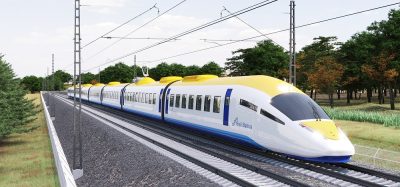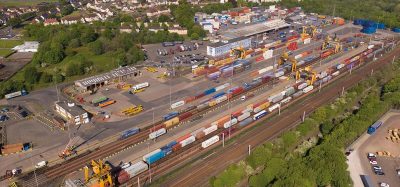A rise in statistics confirms success for Luxembourg
Posted: 23 January 2009 | | No comments yet
Luxembourg’s Minister of Transport, Lucien Lux, describes how recent statistics show how public railway transport in Luxembourg is going from strength to strength.
Luxembourg's Minister of Transport, Lucien Lux, describes how recent statistics show how public railway transport in Luxembourg is going from strength to strength.
Public railway transport in Luxembourg is operated by CFL on account and on the authority of the Ministry of Transport. The year 2007 benefited from the success of the actions realised over recent years on behalf of the improvement of the public passengers transport quality offer. Due to these efforts, the number of passengers has increased by 12.8% (in 2006 to 2007).
International passenger transport benefited from the implementation of the TGV Est-Européen, registering an increase of its revenue by 28% from 2006 to 2007, while cross-border transport increased by 15.5% during the same period.
The constant update of quality indicators is one of the main objectives of the CFL group. Thus, all members of staff are instructed and motivated to pay permanent attention to punctuality, reliability and cleanliness, and to fulfil passengers’ expectations.
Independent customer satisfaction surveys that are conducted show a very positive tendency – and this despite the inconveniencies caused by the execution of numerous large investment projects.
From 2006 to 2007, the rate of punctuality of national passenger transport – that is to say trains with less than five minutes delay – rose from 92.9% to 93.3%. Regarding international transport, punctuality gained 3%, reaching 82.8% in 2007.
In cross-border traffic, the punctuality level was 88.7% for the year 2007, which means an increase of 2.3% compared to 2006.
Safety is of paramount importance to the Ministry of Transport as well as of the CFL group. Important funds are invested every year to ensure that a maximum safety level for passengers, staff and material is reached.
Train passengers need to feel safe when embarking on a journey. Therefore in 2007, CFL actively pursued their efforts to enhance safety for customers and staff. In close cooperation with order guards, the CFL have provided themselves with additional human and technical support for reinforcing their customers’ feelings of trust and safety. Despite several unfortunate incidents, it must be recognised that attacks on passengers or guards remain limited and are even decreasing. The implementation of the programme for equipping railway material with video surveillance has been actively pursued, particularly in the stations of Luxembourg, Esch/Alzette and Mersch.
In 2007, the inauguration of the transport facility of lorries by railway between Bettembourg and Perpignan took place. It was initiated by the company LorryRail of which the CFL are one of the shareholders. This railway freight activity is contributing to:
- Enforcing road safety
- Reducing greenhouse gas emissions
- Reducing fuel consumption
The intention of this project is to relieve the road network and to ensure constant transport between Luxembourg and the south of France whilst producing a considerably lower greenhouse gas output than the road. From the beginning, it benefited from the support of the Luxembourg and French government. A branch office of CFL-MultiModal was entrusted with the handling of the platform of Bettembourg which consisted mainly in charging and discharging wagons. The first commercial train commenced operations in September 2007.
Progress can be noticed in several major international railway connection projects, including:
- The Eurocap-rail project which aims at the improvement of the connection by rail of the three capitals of the European Union – Brussels, Strasbourg and Luxembourg. The interest of Luxembourg lies mainly in the improvement of the line between Luxembourg and Brussels. Modernisation work started in 2006.
- A development and modernisation project of the line between Luxembourg and Trier is planned for 2012, due to the initiatives taken by the Luxemburgian and the German ministers of Transport.
The vision to offer customers a high-level quality service is also expressed by the need to regularly modernise railway material. This vision started in 2004 with the circulation of the first bi-tension locomotive of the 4000 series. 20 of these locomotives were delivered between 2004 and 2005. During the same period, the CFL also proceeded to a progressive utilisation of 85 new double-decker cars.
On 10 June 2007, the European high-speed railway network experienced an extraordinary day with the implementation of the TGV Est-Européen, connecting the city of Luxembourg to 30 other European cities. Thanks to the TGV, the length of a journey could be reduced to 2 hours and 5 minutes with five round-trips per day. The connection of Luxembourg to the European high-speed railway network is beyond doubt a major added value for the economic and cultural development of our country. First figures are very encouraging. The TGV Est-Européen ships, on average, 500 passengers per day in both directions between Luxembourg and Paris.
In order to handle this number of passengers, important modernisation work has already been realised at Luxembourg station. The first part of this work was achieved before the departure of the first TGV with the construction of a new underpass, modernisation of the sales area and installation of an information desk ‘Mobilitéitszentral’.
The turnover of CFL in international passenger transport increased by more than 50% compared to 2006 figures. These encouraging results are not only limited to the TGV-effect. In fact, the number of passengers on the line between Luxembourg and Brussels, for example, has grown by 5.7%.
The ‘tripartite’ meetings (government, CFL management and labour unions) took place from 24 October to 20 December 2005. The negotiating parties of the tripartite approved the large orientation strategies for the railway freight domain and particularly the establishment of the branch office CFL cargo. The tripartite recorded that the rules and regulations of occupation, work, payment and retirement of employees and labourers working for CFL will be maintained, whilst the working conditions for actual and future agents of the CFL group will be measured up to those of the private sector.
The company CFL cargo, a joint-venture of CFL and ArcelorMittal, was established in 2006 and became operational on 17 October 2006. On this day, an extraordinary general meeting of the CFL group founded the new company CFL cargo by integrating the freight activity of CFL and the internal railway transport branch of the company Arcelor-Profil Luxembourg.
The year 2007 will be kept in mind as the year of positioning the new company in the European market and as the year of dynamic development of its activities.
Two branch offices are henceforth dividing up the railway freight segment. Firstly is CFL cargo SA which is charged with all railway freight transport operations in Luxembourg and abroad. And secondly is CFL-MultiModal SA which responds to more selective needs in combined transport and logistic activities.
In order to grant ideal customer satisfaction, CFL cargo, from the beginning, started a huge reflexion process aiming to perfect internal operating procedures, establish an optimal working organisation and decision flow with respect for social cohesion rules and best safety standards.
In order to respond in an ideal way to the strong increase of the railway market in general and to the customer needs in particular, CFL cargo decided, in 2007, to extend its wagon fleet. A purchase order for 540 wagons of 25 meters in length destined for the transport of steel girder and pile planks was placed.
CFL cargo holds a modern and performing fleet of 3,700 wagons that develop a total transport capacity of 207,350 tonnes of which 98.5% can be used for international transport. In parallel to the rolling material acquisition, an important recruitment campaign was made.
The railway freight activity results of 2007 confirm the success of the restructuring and development strategy of this activity for which the revenue increased by 22% from 2006 to 2007. The annual net income has risen by 55% from 2006 to 2007 and has even outranged the budgetary forecast amounting €3.9 million.
Issue
Related topics
Cargo, Freight & Heavy-Haul, Infrastructure Developments, Safety







